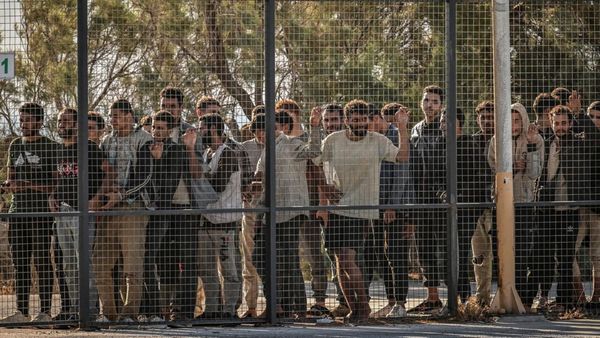
Los Angeles spends nearly $50m a year on its police helicopter program, or roughly $3,000 for every hour of flight, according to a new audit that raises questions about the financial and environmental impacts of the city’s aerial surveillance.
The LA controller’s report released on Monday suggests the use of LA police department (LAPD) helicopters is nearly constant across the city, and the majority of flight time is not in response to reports of major crimes, but instead for transportation, ceremonial trips or patrols. The flights are a major source of pollution and appear to disproportionately affect some communities of color, the audit said.
LAPD’s Air Support Division (ASD), which operates 17 helicopters and has more than 90 employees, costs the city an average of $46.6m a year, or $127,805 a day, the controller reported. Those yearly expenses are greater than the entire budgets of 14 other city departments, including the city clerk’s office ($34m budget); the cultural affairs office ($29.3m); civil, human rights and equity department ($17.7m); and the youth development department ($1.7m).
LAPD’s chief refuted the methodology and some findings in a letter to the controller.
The controller’s analysis of air operations from 2018 through 2022 found that there are typically two helicopters flying for 20 hours a day every day of the year, logging an average of 16,000 hours of flight time each year. The helicopters burn an estimated 761,600 gallons of fuel yearly, releasing more than 7,400 metric tons of carbon dioxide, according to the report, which said this output was equivalent to over 19m miles driven by gas-powered cars.
“Our audit’s findings strongly suggest that the LAPD’s current use of helicopters causes significant harm to the community without meaningful or reliable assessment of the benefits it may or may not deliver,” said the report from controller Kenneth Mejia, who was elected last year on promises to scrutinize LAPD spending.
The audit identified 783 instances of ceremonial “fly-by” activities of the helicopter unit over the five-year period. That included flights over LAPD graduations, retirements, funerals and community events. The office reported numerous instances that it said were “inefficient, inappropriate use of City funds”, including a six-hour flight for a gathering called a “Chili Fly-In”; seven “fly-by” activities at golf tournaments; and a roundtrip helicopter ride that took two LAPD officials from downtown headquarters to a meeting at a station 20 miles away.
“If you live in LA, the hum, drum and loud thunder of helicopter rotor blades in the sky is a fact of life,” said Sergio Perez, chief of accountability and oversight for the controller. “Helicopters fly over my house sometimes at 3am, at 5pm, at 8am. I have a three-year old who has been woken up by it. This noise pollution has a negative impact on your mental health … These are real costs, and it’s incumbent on us to ask, ‘What is the point? What are we getting from this?’”
The audit found that the helicopter division devoted only 39% of its flight time to “high priority crimes”, such as reports of felony offenses or urgent public safety matters, including missing person searches. But even with those instances, the report said that neither the controller’s office nor LAPD can demonstrate that the helicopters have deterred crime.
Past reporting has found that helicopters can have devastating consequences in high-stress situations. In one case, the noise of an LAPD helicopter drowned out an officer’s shout that a man who police were surrounding “doesn’t have the knife”. An officer only heard the word “knife” and fatally shot the civilian, with the LA Times concluding that he probably would have survived the encounter if the helicopter had not arrived and escalated the situation.
The audit notes that long-term noise exposure can negatively impact Angelenos’ quality of life, including leading to decreased sleep and increased stress, with links to reduced metabolism and cardiovascular disease. The audit found that the 77th Street area in South Los Angeles has experienced the largest share of flights relative to serious crimes reported there. That is a historically Black area where there have long been concerns about police surveillance, harassment and racial profiling. The divisions that include Baldwin Hills, Crenshaw and Boyle Heights have also been disproportionately affected by helicopters.
Neighborhoods with the least helicopter activity relative to their share of reported crimes include West Los Angeles and the Pacific Area divisions, which are closer to Santa Monica, Venice and the beach.
LAPD, the report notes, has argued that air operations can allow officers to avoid certain ground operations that carry greater risk to the public and police, including vehicle pursuits, although LAPD continues to frequently injure and kill bystanders during ground chases.
“ASD helps save lives,” Michel Moore, the LAPD chief, said in his letter, asserting that the perspective from aerial officers had helped police on the ground avoid shooting civilians.
Moore said the findings constituted a “rudimentary analysis [that] demonstrates a lack of understanding of the complexities” of ASD operations, and that it was not clear how the controller calculated the estimated $3,000 an hour cost. The controller responded that the estimates were based on costs of labor, fuel, procurement, helicopter acquisition, maintenance, overhead and other related expenses.
In a statement on Monday after the audit’s release, Moore said the department would review the final report, but said the helicopters “play a critical role in our public safety mission”. He added: “Their flights frequently result in their arrival at calls for service ahead of our patrols aiding responding officers with critical information and situational awareness. Air support also provides added patrols to detect and prevent crimes including residential burglaries while also responding to officer’s assistance calls involving violent and highly dangerous situations.”







